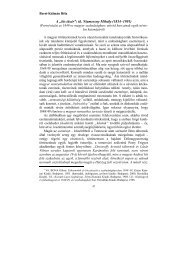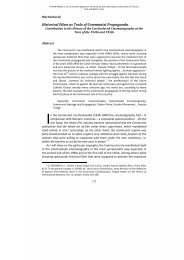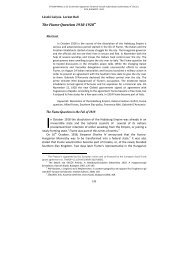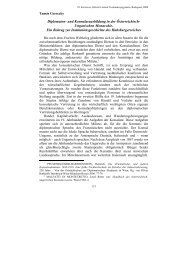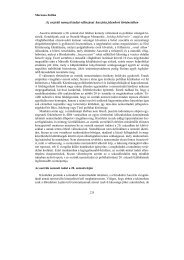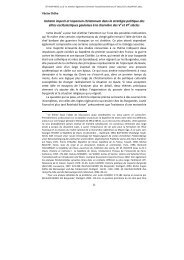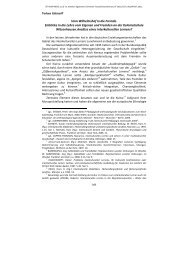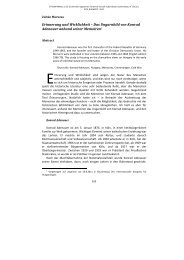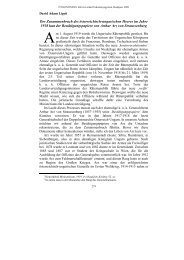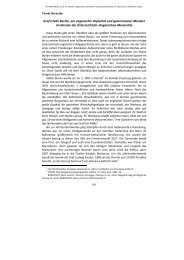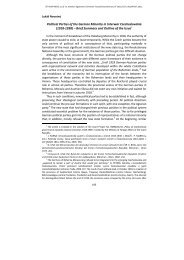The Molotov-Ribbentrop Pact - ELTE BTK Történelem Szakos Portál
The Molotov-Ribbentrop Pact - ELTE BTK Történelem Szakos Portál
The Molotov-Ribbentrop Pact - ELTE BTK Történelem Szakos Portál
You also want an ePaper? Increase the reach of your titles
YUMPU automatically turns print PDFs into web optimized ePapers that Google loves.
Dubasque, François<br />
<strong>The</strong> German-Soviet <strong>Pact</strong> and the toing and froing of the French pacifists<br />
While having a destabilising influence on international relations, the<br />
German-Soviet <strong>Pact</strong> of 23 August 1939 also had significant consequences for<br />
French political life on the eve of World War II. For many contemporary<br />
observers, this event sealed the fate of peace. This is why we thought it would<br />
be interesting to assess its impact on the pacifist movements which existed in<br />
the country in 1939. <strong>The</strong> term pacifism should be interpreted strictly as<br />
political activism in favour of peace via associations, trade unions, media<br />
outlets and political groups. <strong>The</strong> idea would therefore be to determine whether<br />
the German-Soviet <strong>Pact</strong> caused the reconstitution of the pacifist movement in<br />
France and its impact and consequences.<br />
After outlining a brief description of the group of French pacifists in the late<br />
1930s, we shall initially focus on the attitude of the French Communist Party<br />
(PCF) so as to highlight the position of other players, in particular those in<br />
power, in relation to these new national and international issues.<br />
Pacifism in France in the late 1930s<br />
<strong>The</strong> oldest form of pacifism in the country has been represented, since the<br />
late 19 th century, by the Association de la paix par le droit (Association for<br />
peace through law) headed by philosopher Théodore Ruyssen 1 . Based on legal,<br />
internationalist and positivist ideas, this association supports Léon Bourgeois’s<br />
post-war initiatives, a former radical-socialist president of the Council<br />
representing France in the 1919 Peace Conference, in favour of an international<br />
arbitration tribunal and the League of Nations (LoN). Bourgeois is himself the<br />
originator of the French Association for the League of Nations, defending<br />
Aristide Briand’s policy, after which, in the 1930s, he campaigns for collective<br />
security and disarmament. <strong>The</strong> shock of World War I widened the audience of<br />
this moderate type of pacifism situated on the centre left of the political<br />
spectrum. War veteran associations, in an effort to prevent a new murderous<br />
madness, joined this campaign, which was part of the Geneva movement.<br />
At the time of the Munich agreement in September 1938, the political<br />
landscape of pacifism is becoming blurred with the surprising combination of<br />
two types of pacifism: a doctrine-based pacifism influences the socialist party<br />
as well as the powerful related National union of school teachers. Within the<br />
Section française de l’Internationale ouvrière (SFIO, French Section of the<br />
Workers’ International), a sizeable fraction, led by secretary general Paul<br />
1 FABRE, R.: Un exemple de pacifisme juridique: Théodore Ruyssen et le mouvement La<br />
paix par le droit (1884-1950). In: Vingtième Siècle. Revue d’histoire, vol. 39 (1993), 38-54.<br />
135



